Best viewed after chapter one.
This post’s “stars” are named after terrestrial flowering plants, but sea anemones are carnivorous animals.
I took all the photos in this post on June 4, 2015, within 40 minutes of each other, around low tide.
The anenomes above were still fully immersed.
This one no longer was, quite; it is of the same species, I think.

Depending on what it is up to – and the particular circumstance it finds itself in – an individual anenome’s appearance can change, radically.
I think the individual below is in the process of relocating from “ceiling” to “floor”, to avoid dehydration.
I could be wrong; it might just be devouring something that the outgoing tide had left stranded, on the “floor”.
(to discover/see more about how anenomes eat, click here)
A short while ago the “ceiling” was under water; now, the “floor” is barely wet, but the returning tide will soon inundate the latter.
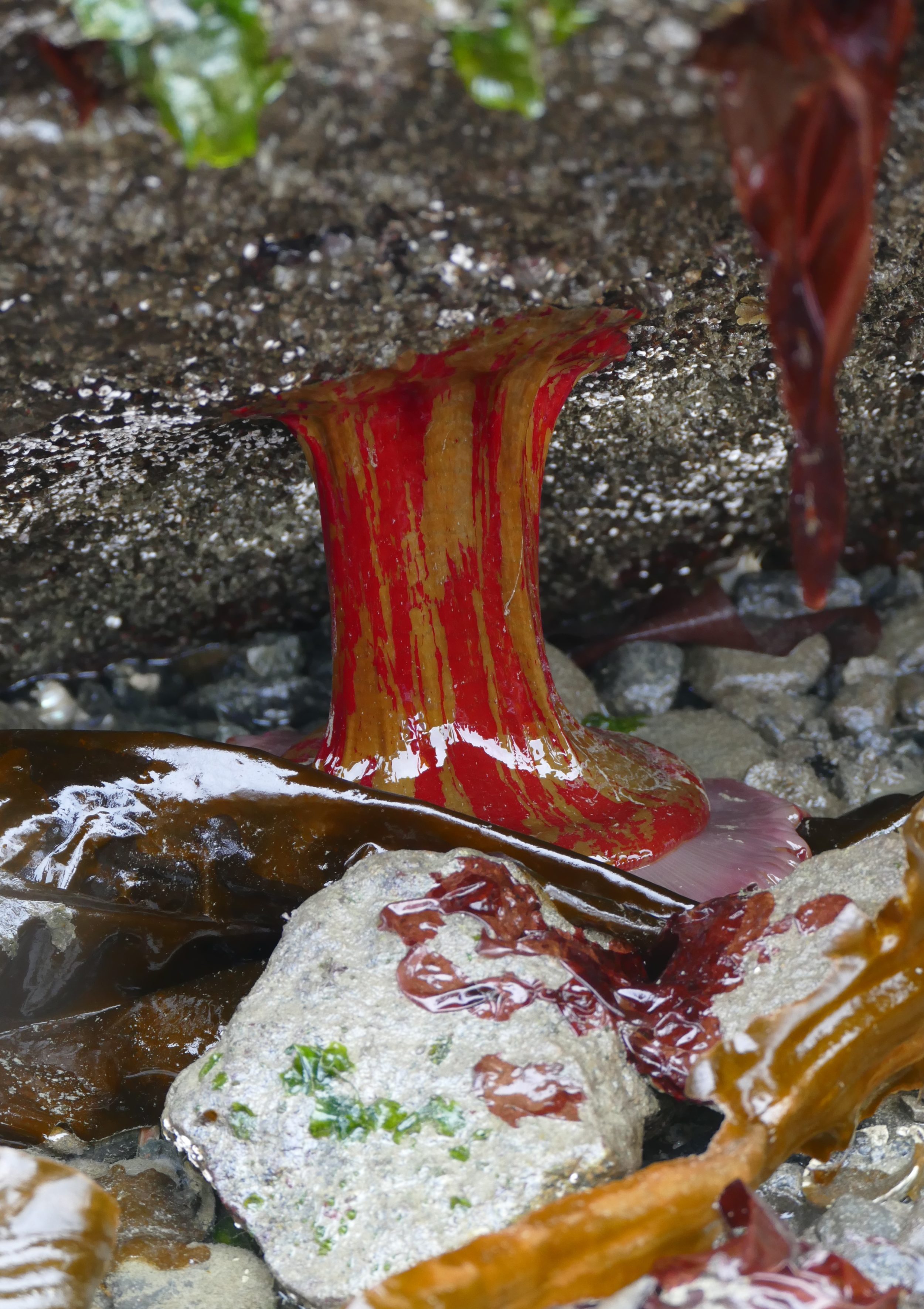
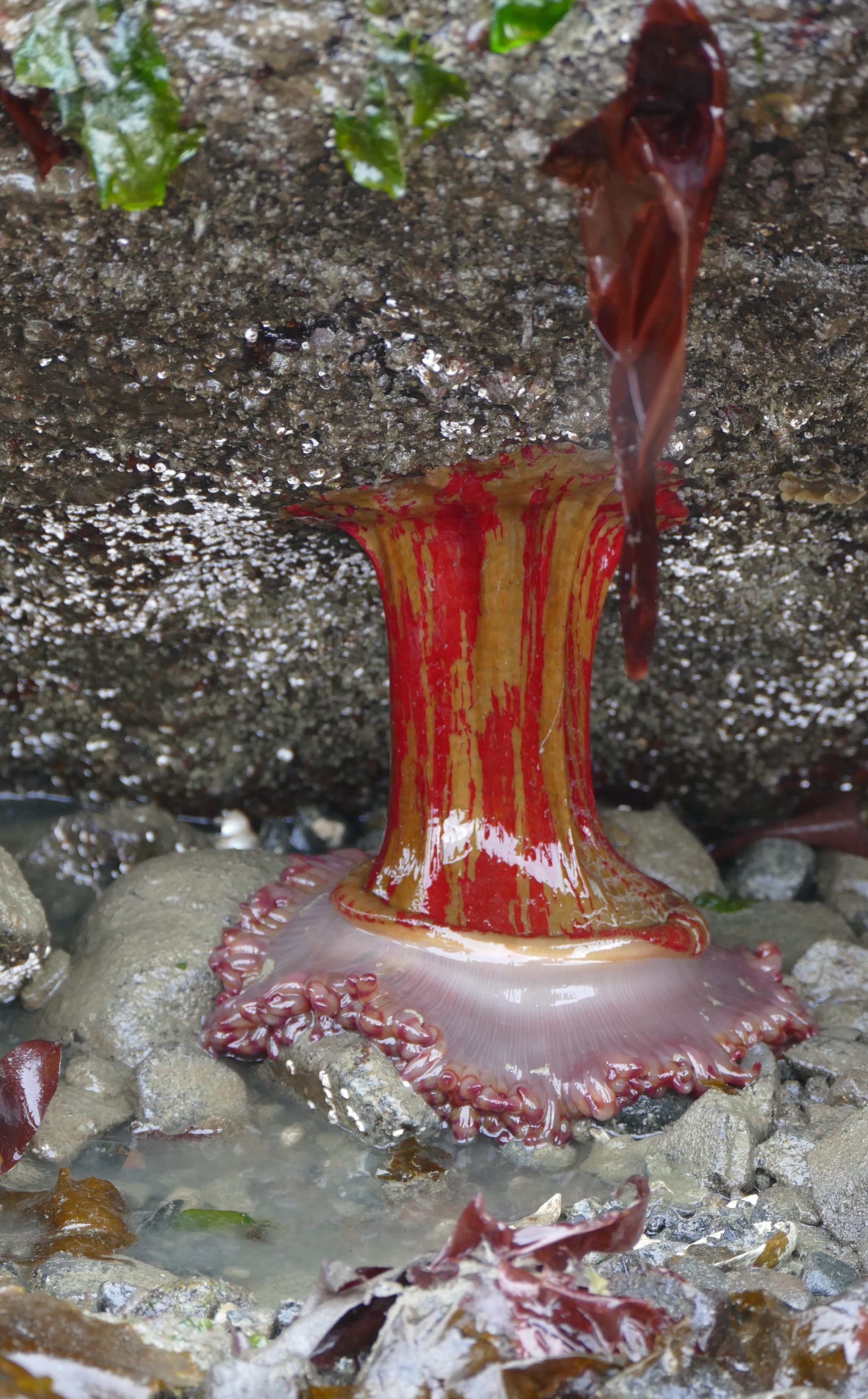
The next photos show other anenomes, immersed…and the view along the shoreline, shortly before our return to zodiac, then boat.
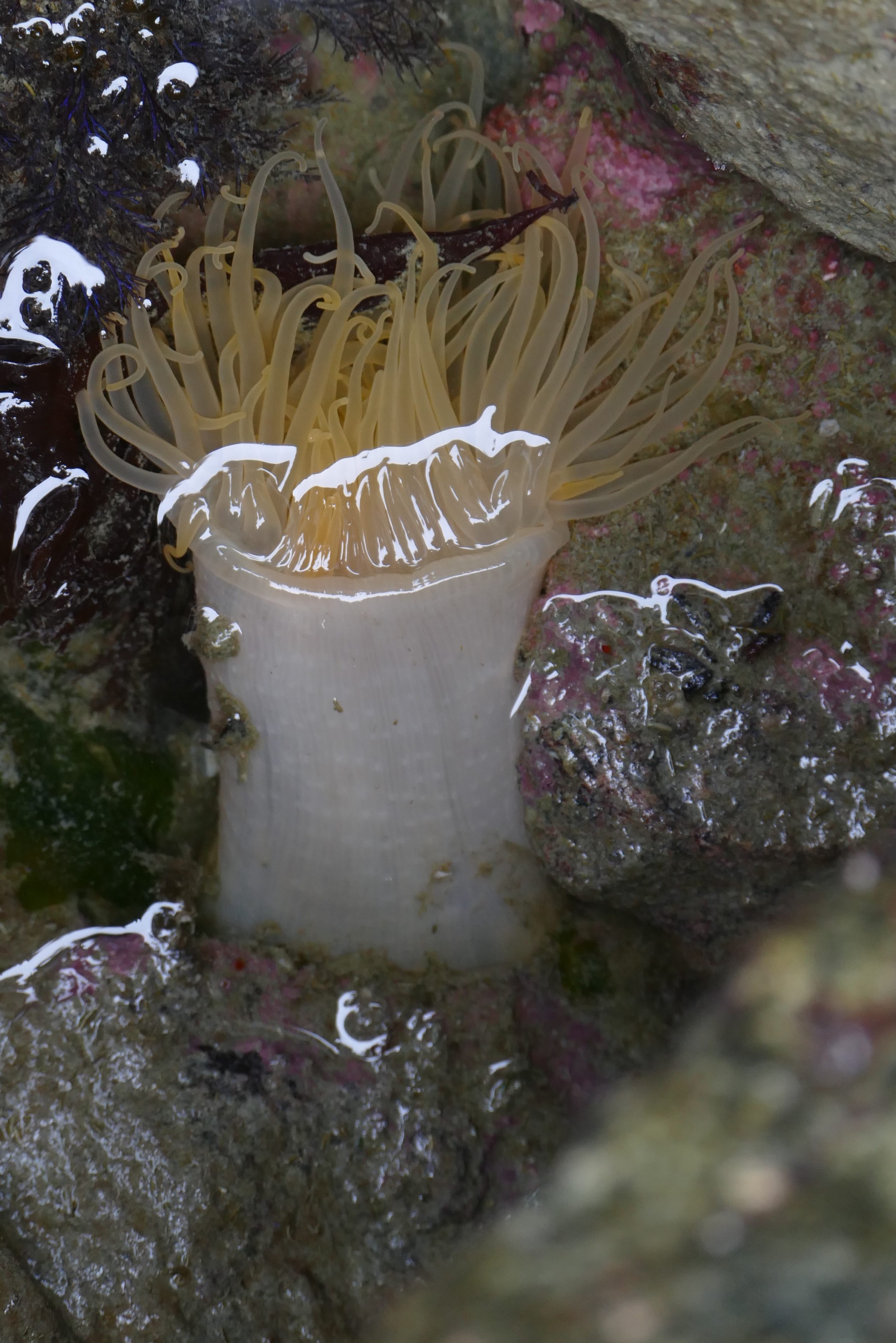
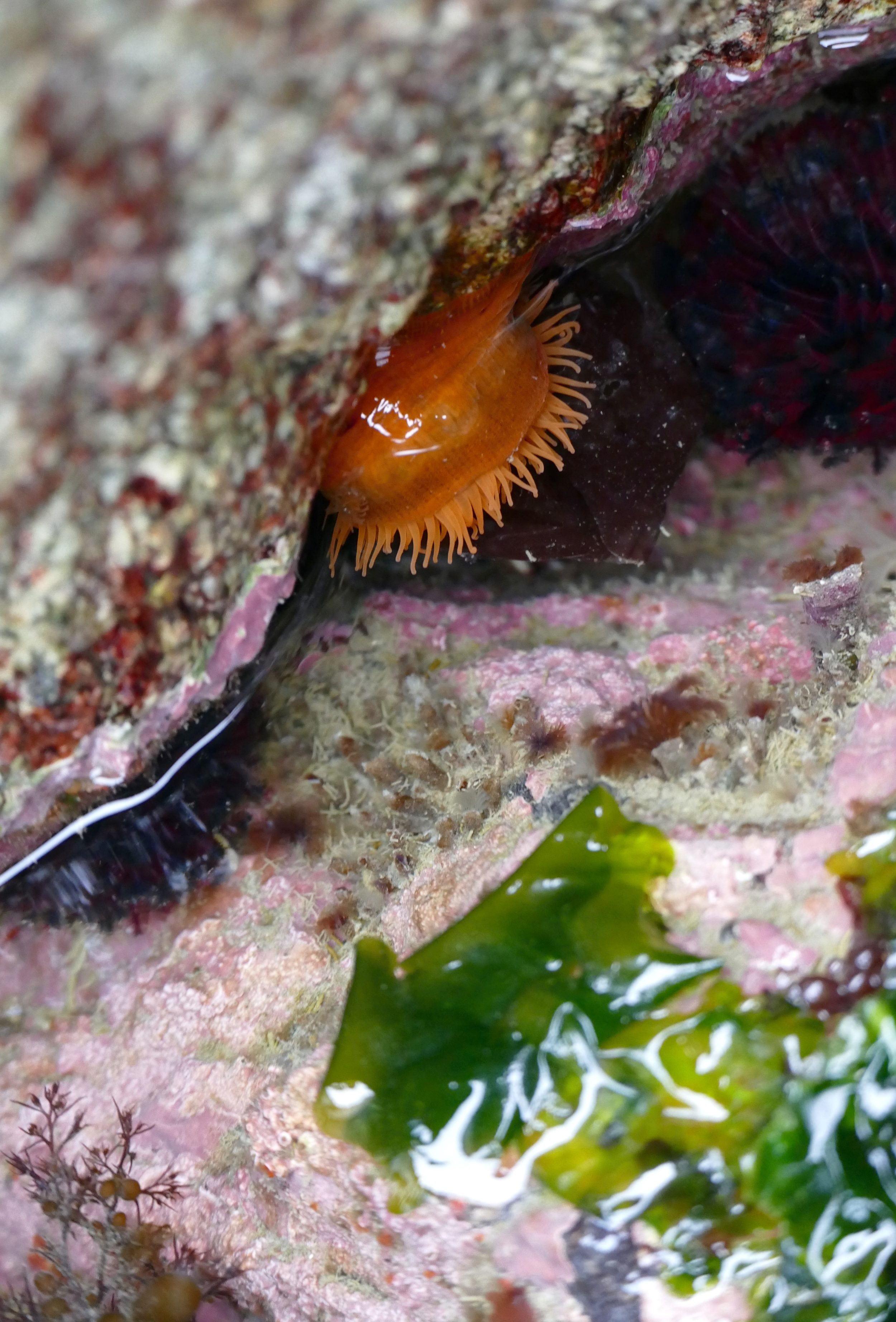
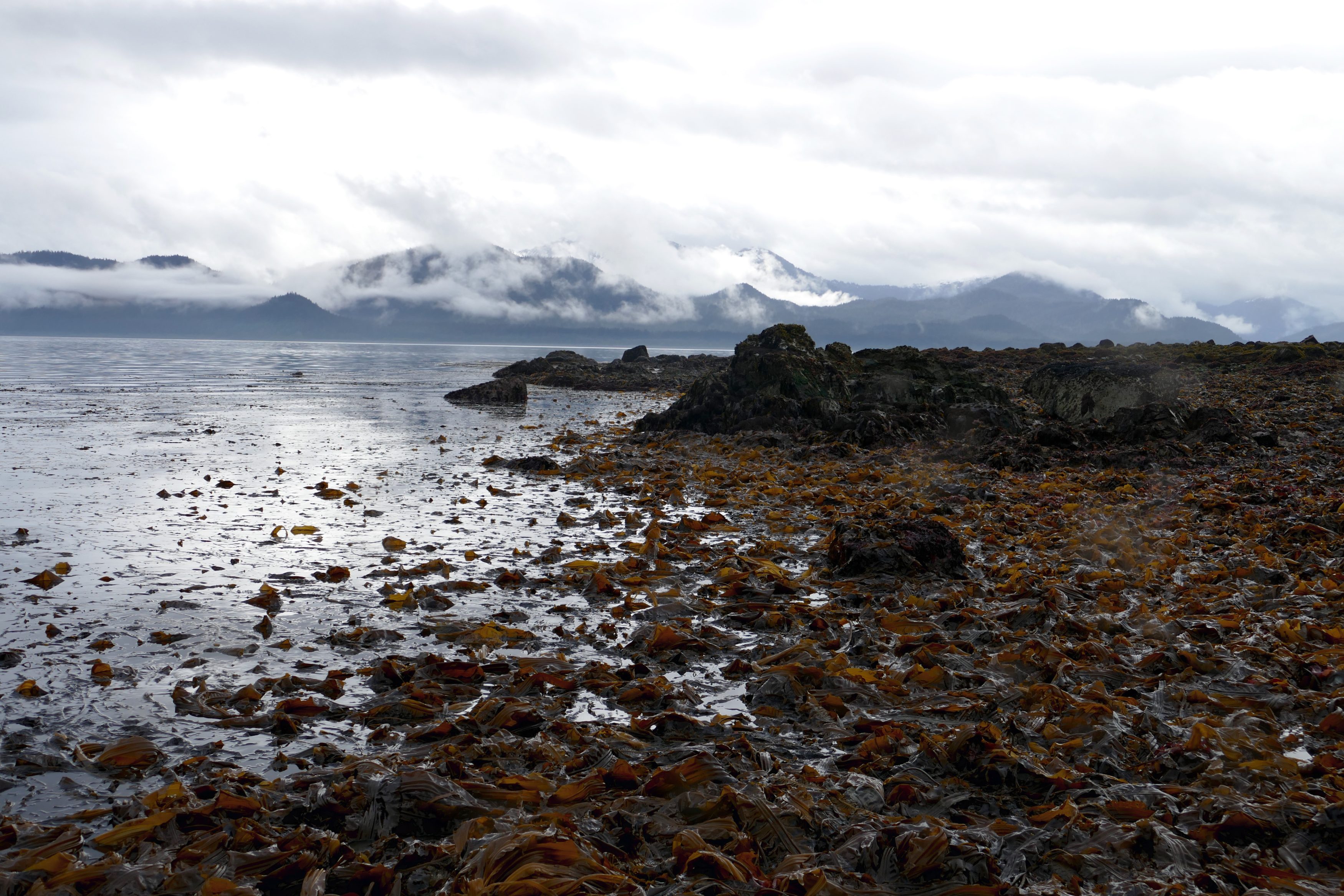
There are still more Alaska posts to come; to see those published so far, click the “magnifying glass” icon on top of any Pelican Yoga page, then simply search for Alaska.
Even more simply, on this particular page, click the “Alaska” tag which is further down this page.
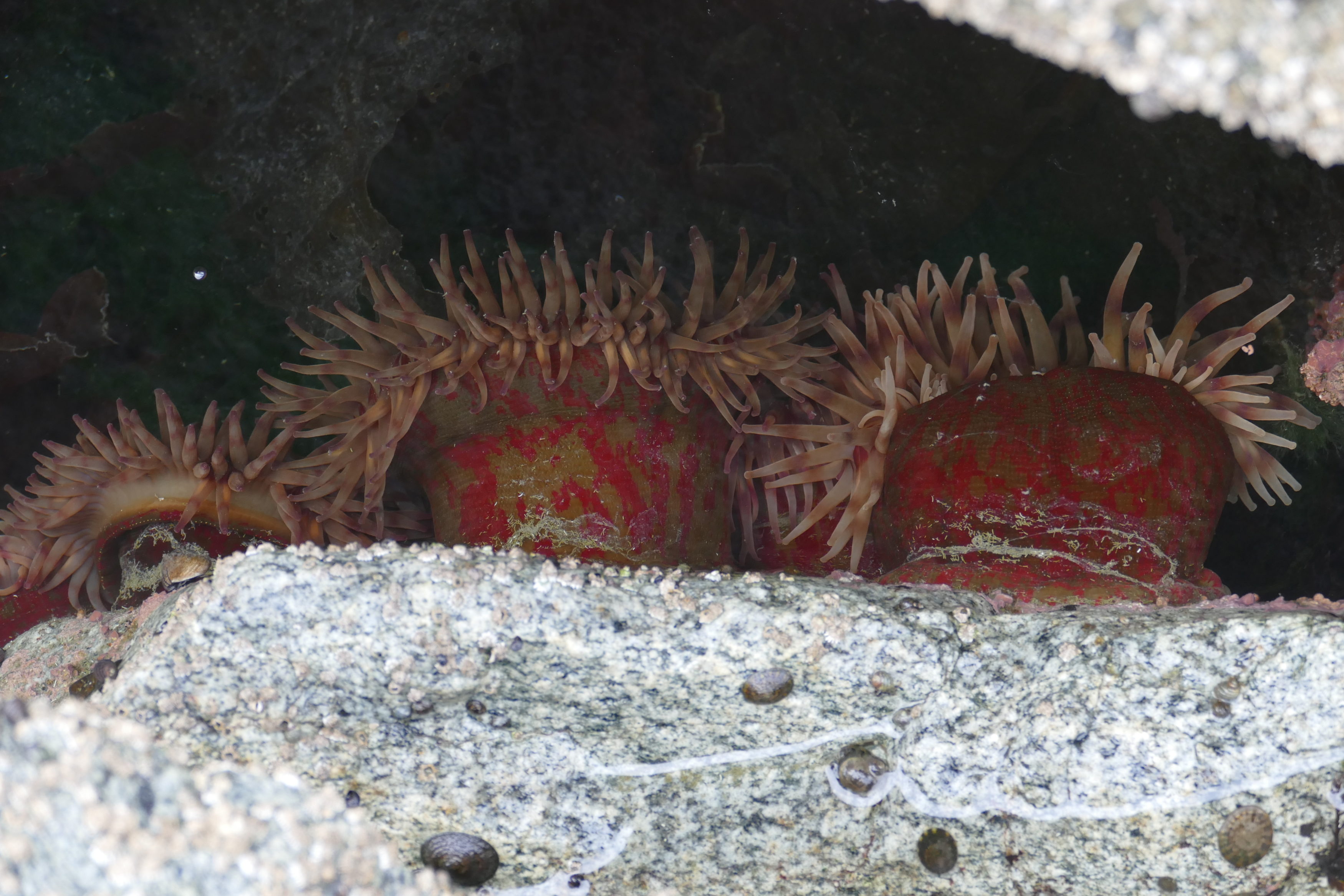
Glazier bay looks like a great place to visit and you have certainly made the most of the opportunity through your excellent photography. Good to see Chapter 2 published after a pause of two years and a bit.